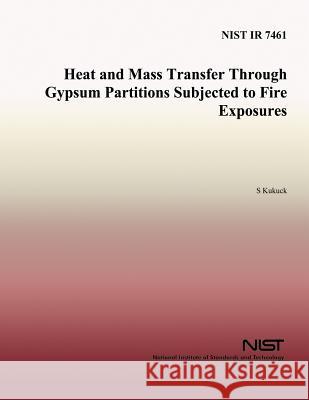Heat and Mass Transfer Through Gypsum Partitions Subjected to Fire Exposures » książka
Heat and Mass Transfer Through Gypsum Partitions Subjected to Fire Exposures
ISBN-13: 9781495919893 / Angielski / Miękka / 2009 / 28 str.
Heat and Mass Transfer Through Gypsum Partitions Subjected to Fire Exposures
ISBN-13: 9781495919893 / Angielski / Miękka / 2009 / 28 str.
(netto: 61,62 VAT: 5%)
Najniższa cena z 30 dni: 64,17
ok. 16-18 dni roboczych
Bez gwarancji dostawy przed świętami
Darmowa dostawa!
A model is presented that describes the heat transfer through a gypsum wallboard partition assembly incorporating the mass transport effects of water in liquid and vapor form. Sources of water include surface bound (adsorbed) water and hydrated water that is chemically bound with the crystal matrix of gypsum. Liberated water is allowed to migrate through the porous structure through molecular diffusion and pressure driven flow. Evaporation or condensation occurs when the partial pressure of water vapor with the pore space is less than or greater than the saturation pressure, respectively. Results obtained from the model are compared to measurements taken during a standard fire resistance test. It is found that the surface temperatures are typically under-predicted, although qualitatively similar behavior is observed. The analysis implies that the liberation and transport of water in both its liquid and vapor form plays a significant role in the thermal response of gypsum wallboard subjected to fire exposures, perhaps even beyond the extent to which the current model has been developed. The model can be used, under the assumptions through which it was developed, to conduct sensitivity studies of the physical parameters and evaluate the effect upon the fire resistance of the system.
Zawartość książki może nie spełniać oczekiwań – reklamacje nie obejmują treści, która mogła nie być redakcyjnie ani merytorycznie opracowana.











